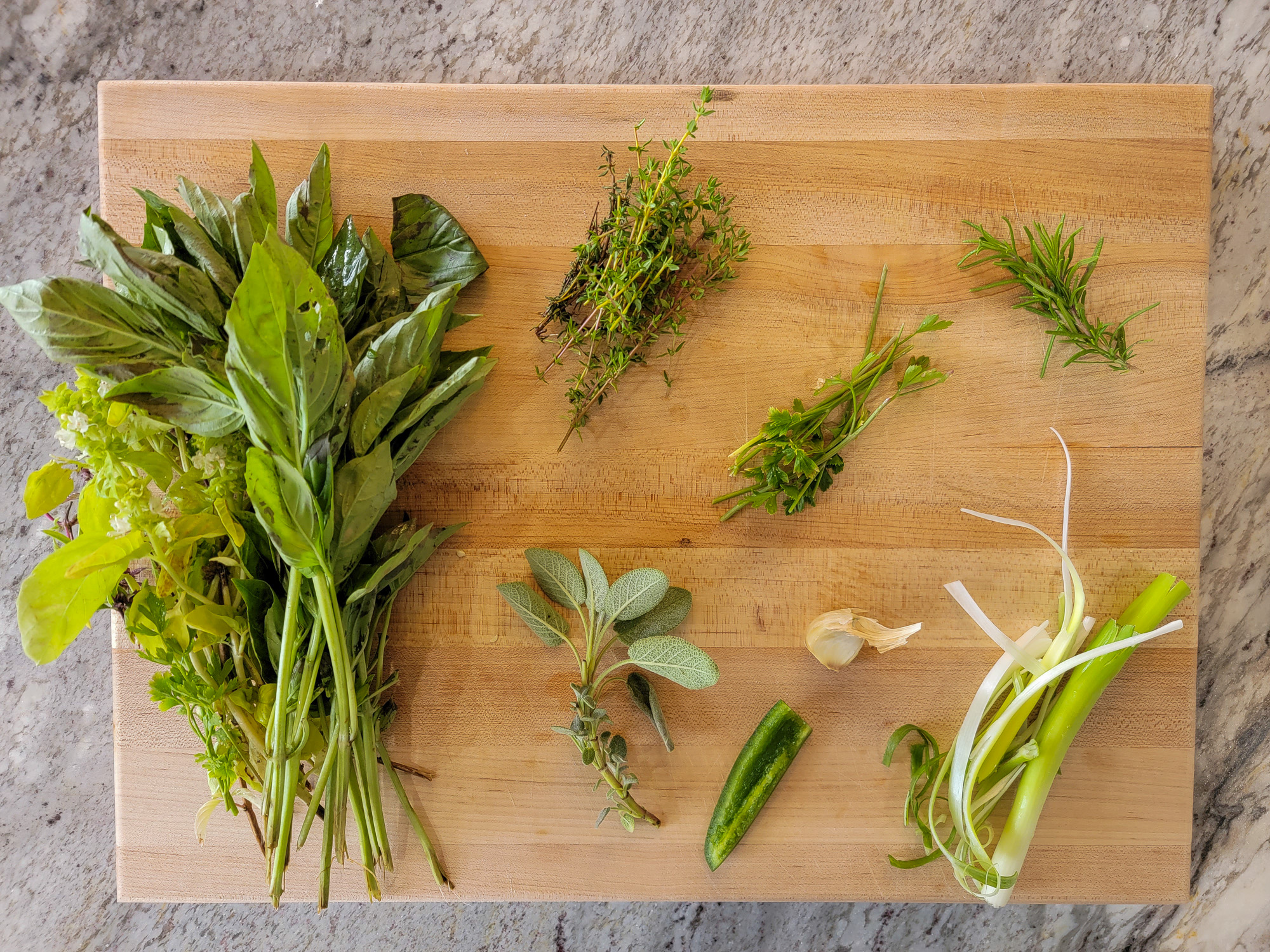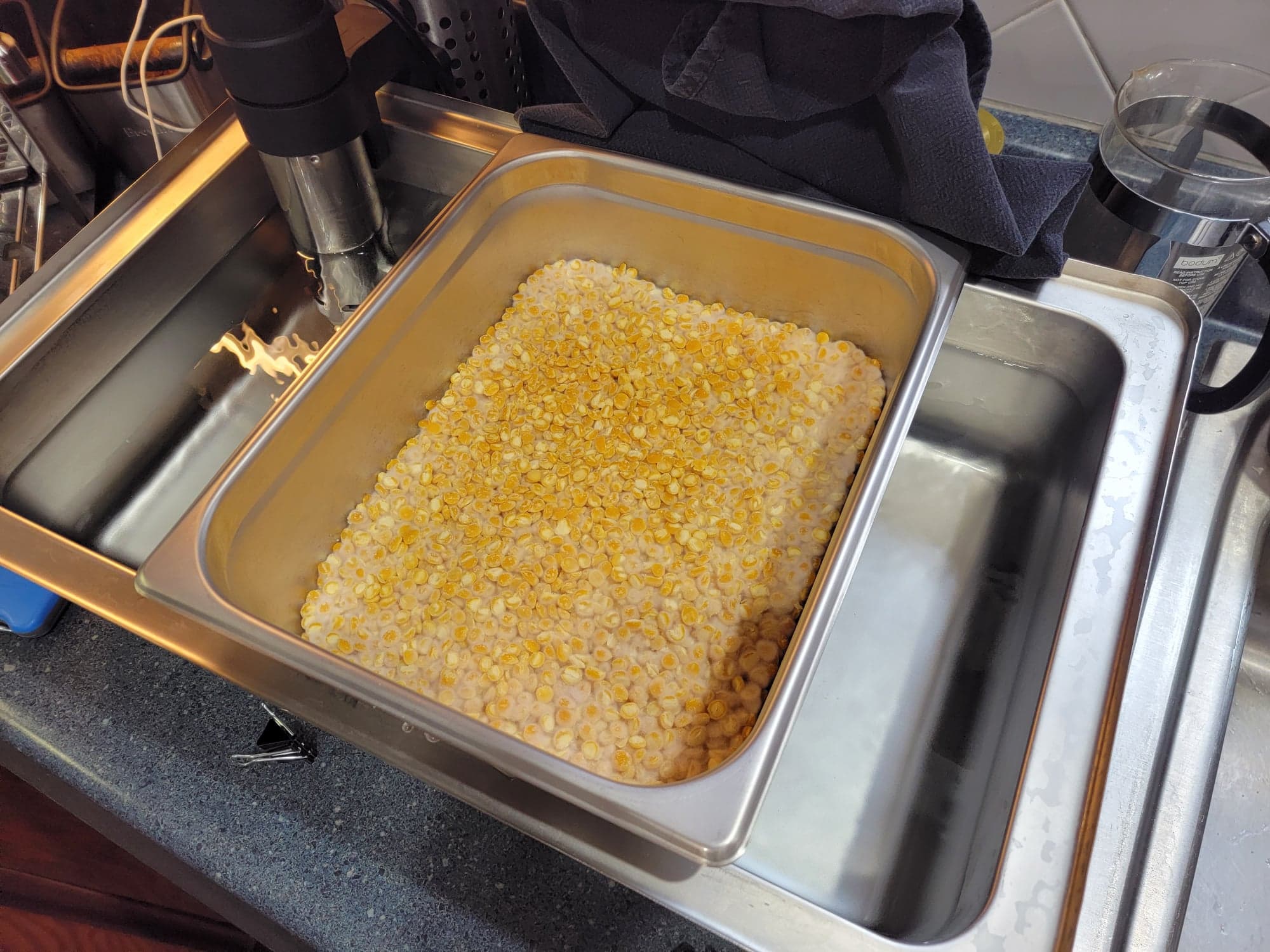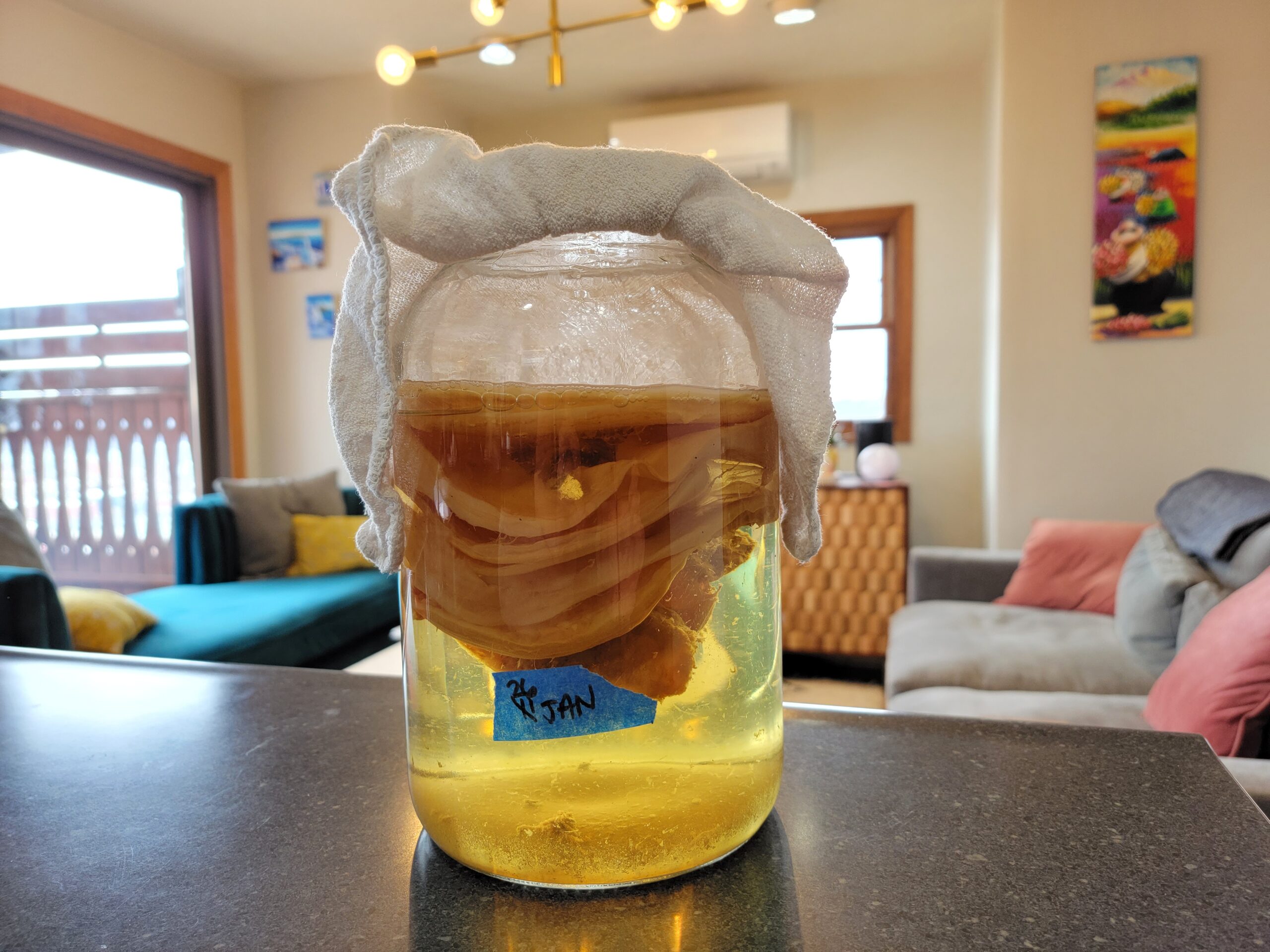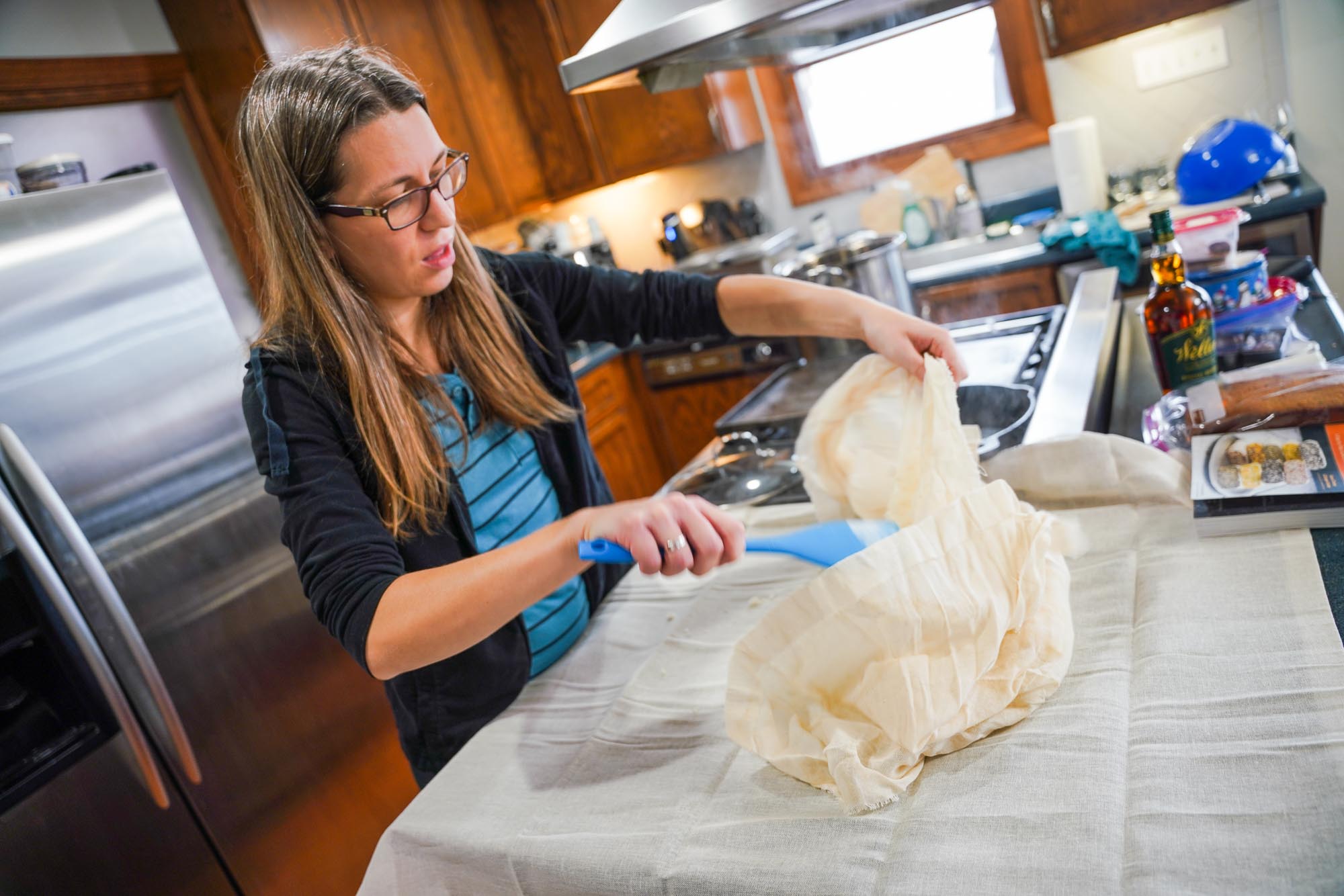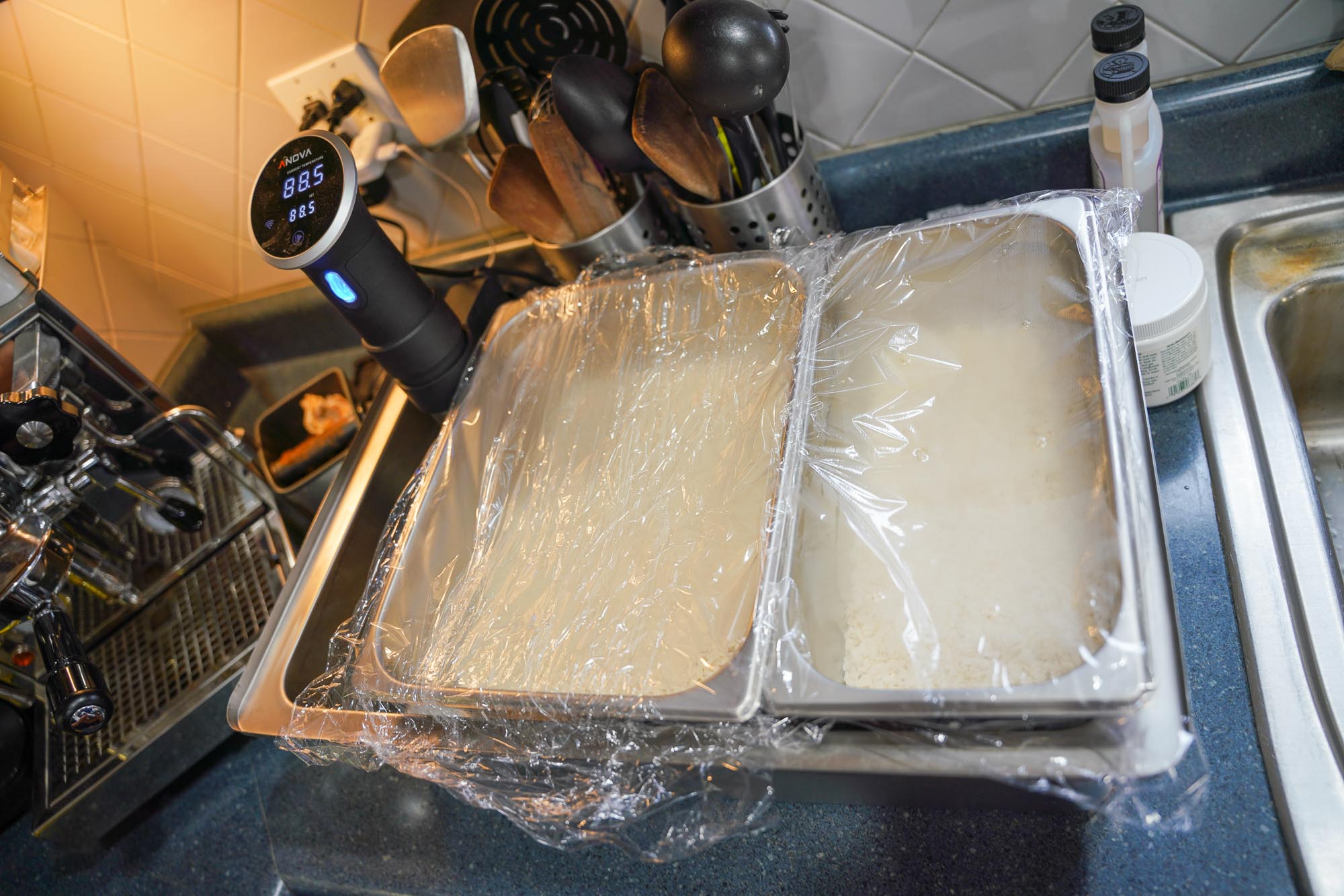We are kind of obsessed with growing fresh herbs in our garden – everything from the usual suspects of basil, parsley, and thyme, to more obscure things like lovage and epazote. Every spring we ambitiously plant dozens of different herbs, which seems great in theory- until you have the wonderful problem of having too many herbs.
So, what do you do? Make a meal with as many herbs as possible? Perhaps. Let them rot? That also happens.
Instead, why not make a lacto-fermented herb sauce so that way you can enjoy the powerful flavor of herbs weeks or months later!

